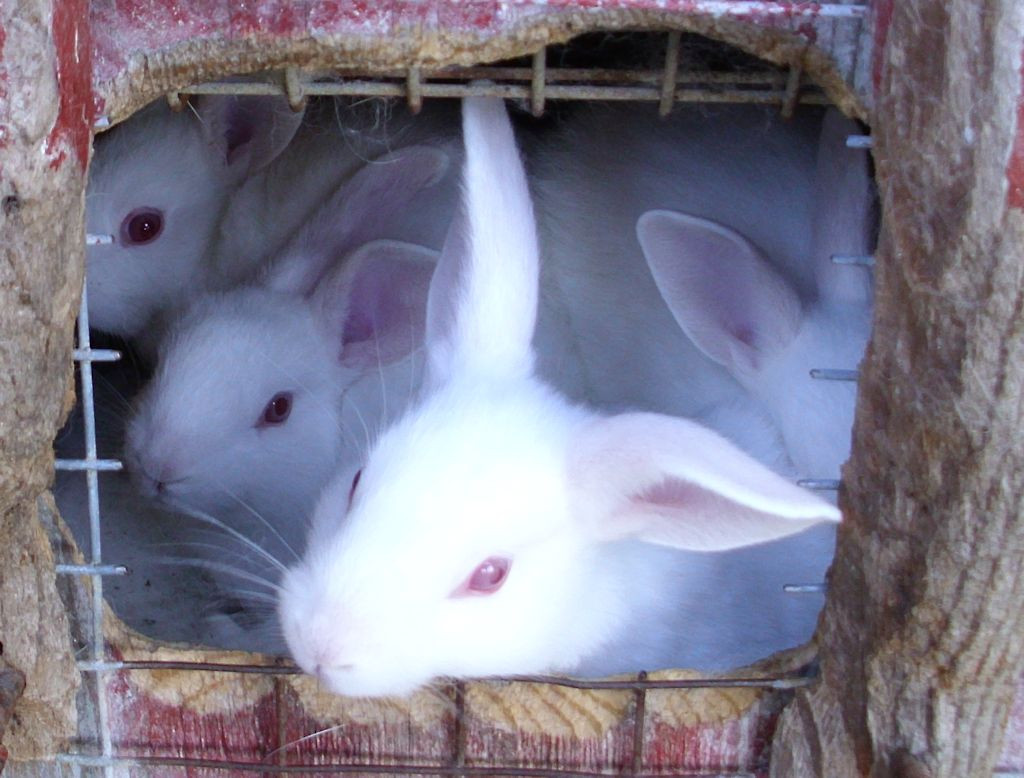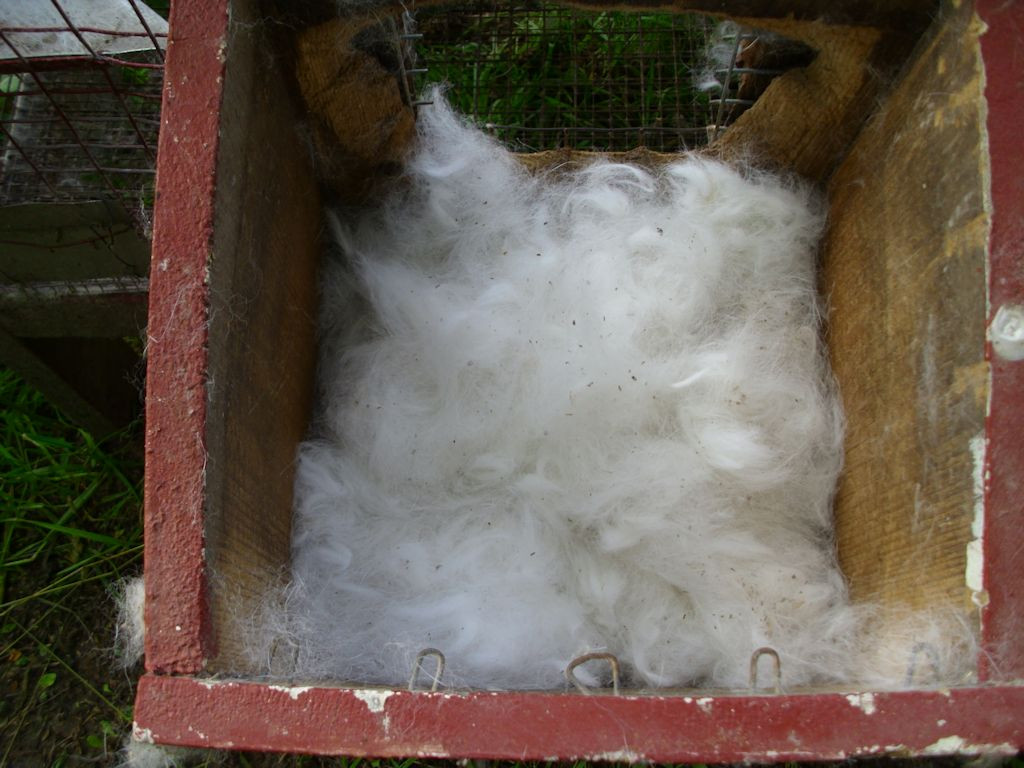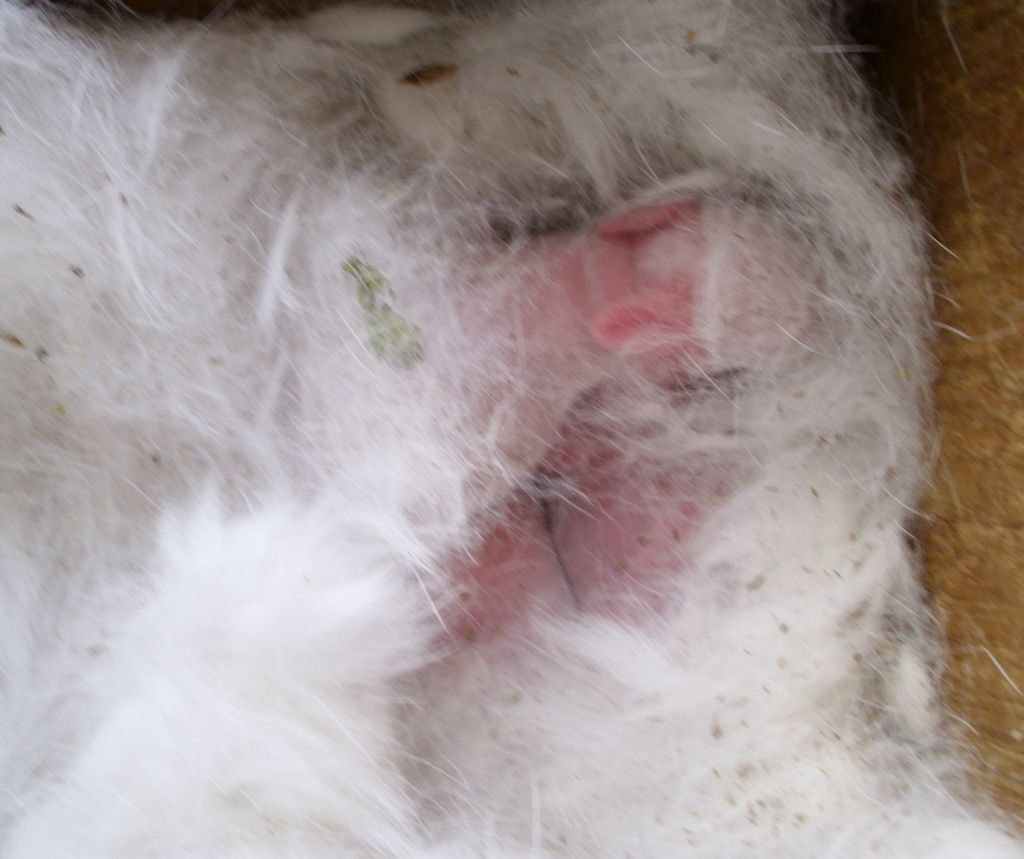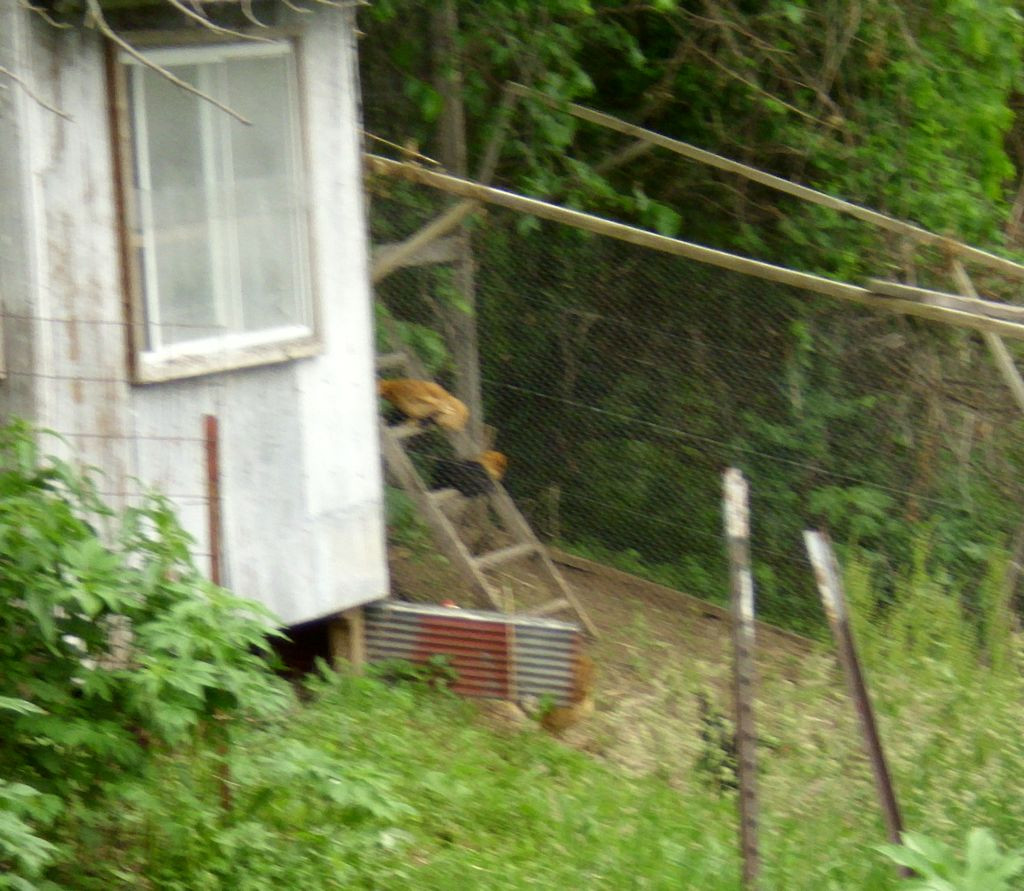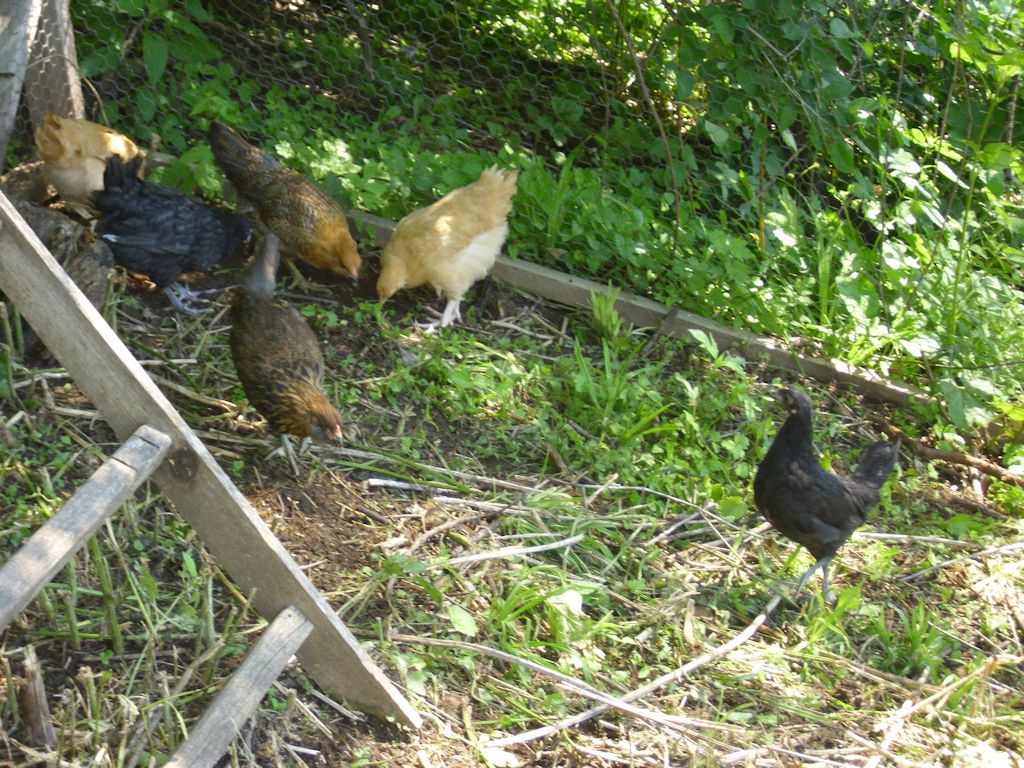The kits are moving ever closer to adulthood. At this point, they’re weened and join mom at the dinner table each day. They also don’t run and hide every time they seem me. In fact, they’re downright curious about me at times.

It’s amazing to see how fast they’re growing. Of course, rabbits don’t grow at nearly the same rate as meat chickens do and the feed a bit more expensive. These rabbits will leave the cage soon and go to a gender segregated cage where they can grow to full size. In the meantime, they love to hop about during the day and play with each other and mom. For the most part, Moonbeam tries to ignore the playfulness, but there are times when she has had enough and does something about it. A grunt or a bit of a nip is usually all it takes to get the youngster back on its best behavior.
Meat rabbits aren’t as tame as you might think, however. Right before I took this picture, Moonbeam took a nip out of my hand. It wasn’t anything serious, but she did draw blood. She was irritated that I reached inside the cage to get the food containers. It isn’t something that happens every day, but it’s important to realize that these animals might look cuddly, can be cuddly, but they’re also animals with a set of instincts that you need to respect. Certainly, Moonbeam got mine. I usually keep the most aggressive rabbits for breeding purposes because they do make better parents and have stronger offspring. Even through several heat waves that might have caused problems for other rabbits, six out of Moonbeam’s eight kits survived without problem (and one of the two that died was a runt that had problems feeding from the outset).
After Moonbeam’s kits leave the cage, I’ll give her a little time to rest, and then breed her again for the fall season. In most years, I normally breed the rabbits twice—once in the spring and again in late summer. Because I lack a heated rabbitry, I never breed the rabbits more than twice to ensure I don’t need to overwinter them. The rabbits that are higher off the ground and have a cozy nest box to live in do just fine, but the larger cages are on the ground and don’t offer enough protection. Let me know about your hare raising experiences at [email protected].

